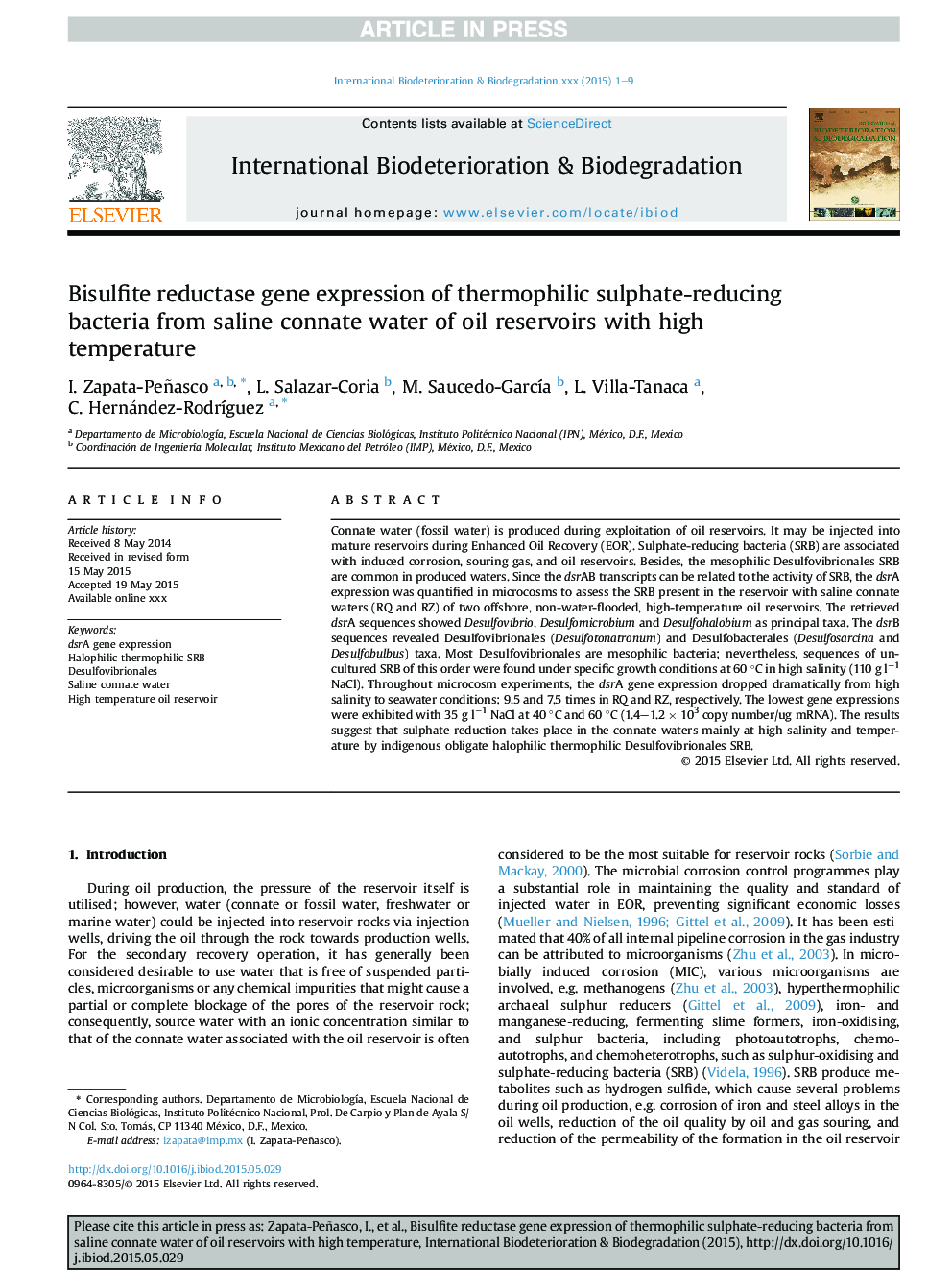| Article ID | Journal | Published Year | Pages | File Type |
|---|---|---|---|---|
| 6289206 | International Biodeterioration & Biodegradation | 2016 | 9 Pages |
Abstract
Connate water (fossil water) is produced during exploitation of oil reservoirs. It may be injected into mature reservoirs during Enhanced Oil Recovery (EOR). Sulphate-reducing bacteria (SRB) are associated with induced corrosion, souring gas, and oil reservoirs. Besides, the mesophilic Desulfovibrionales SRB are common in produced waters. Since the dsrAB transcripts can be related to the activity of SRB, the dsrA expression was quantified in microcosms to assess the SRB present in the reservoir with saline connate waters (RQ and RZ) of two offshore, non-water-flooded, high-temperature oil reservoirs. The retrieved dsrA sequences showed Desulfovibrio, Desulfomicrobium and Desulfohalobium as principal taxa. The dsrB sequences revealed Desulfovibrionales (Desulfotonatronum) and Desulfobacterales (Desulfosarcina and Desulfobulbus) taxa. Most Desulfovibrionales are mesophilic bacteria; nevertheless, sequences of uncultured SRB of this order were found under specific growth conditions at 60 °C in high salinity (110 g lâ1 NaCl). Throughout microcosm experiments, the dsrA gene expression dropped dramatically from high salinity to seawater conditions: 9.5 and 7.5 times in RQ and RZ, respectively. The lowest gene expressions were exhibited with 35 g lâ1 NaCl at 40 °C and 60 °C (1.4-1.2 Ã 103 copy number/ug mRNA). The results suggest that sulphate reduction takes place in the connate waters mainly at high salinity and temperature by indigenous obligate halophilic thermophilic Desulfovibrionales SRB.
Related Topics
Life Sciences
Environmental Science
Environmental Science (General)
Authors
I. Zapata-Peñasco, L. Salazar-Coria, M. Saucedo-GarcÃa, L. Villa-Tanaca, C. Hernández-RodrÃguez,
